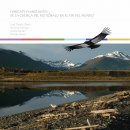http://news.nationalgeographic.com/news/2006/11/061114-chile-mosses.html
Unique Mosses Spur Conservation, Ecotourism in Chile
John Roach
for National Geographic News
November 14, 2006
A biosphere reserve on the southern tip of South America owes its existence, in part, to the diversity of mosses found there.
The Cape Horn Archipelago, a chain of wind-battered islands in the southernmost reaches of Chile, contains only a few tree species but a bounty of rare and unique mosses, according to William Buck, the curator of bryophytes at the New York Botanical Garden (map of Chile).
Bryophytes are a group of nonflowering plants that include mosses, liverworts, and hornworts.
Buck has traveled to the Cape Horn Archipelago each of the past four years to catalog the region’s mosses.
Inclement weather, rough seas, and a decades-long border dispute with neighboring Argentina have kept the archipelago pristine and unexplored. Many of the islands have never been studied, Buck says.
To date, he and his colleagues have documented numerous mosses previously unknown in the archipelago and several others that are new to science.
“I’m personally just interested in what mosses are there and how they are related to one another,” Buck said.
According to Buck, mosses are amazing plants because they can almost completely shrivel to nothing and enter suspended animation—in which all their vital functions cease—for years. Then, with a few drops of water, they can spring back to life.
Protected Area
But the findings, Buck adds, have aided local conservation efforts to bring greater environmental protections to the region and are helping to create a niche form of ecotourism.
“Like the Amazon is important for global diversity of primates and birds, [Cape Horn] is important for the diversity of bryophytes,” said Christopher Anderson, a postdoctoral research fellow with the Institute of Ecology and Biodiversity in Santiago, Chile.
In 2005, the United Nations Education, Science, and Culture Organization (UNESCO) approved a Chilean government application to declare the Cape Horn Archipelago a biosphere reserve.
The designation promotes sustainable development, conservation, and research of the approximately 12-million-acre (4.9-million-hectare) region.
Anderson, who is also a research associate with the University of Magallanes Omora Ethnobotanical Park, a public-private operation in the Cape Horn Archipelago, says the bryophyte research was instrumental in the establishment of the reserve.
“It put into the value the southern region of Chile compared to other places with higher diversity of larger, more easily recognizable taxa,” he said.
Unique Mosses
According to the New York Botanical Garden’s Buck, the geography of South America, which narrows to a point as it extends toward the South Pole, likely explains the bounty of mosses.
“A lot of things have real narrow distributions, partly because there’s no more land to be distributed on,” he said. “You also get a lot of fairly rare things down there.”
Anderson explains that while the diversity of most plants and animals decreases as latitude increases, the trend reverses for the bryophytes.
He said between 5 and 7 percent of the world’s mosses and liverworts are found in the Cape Horn Archipelago.
In the island chain, as in most parts of the world, mosses prevent erosion and maintain forest humidity, among other ecological services. The plants soak up water during rainstorms, which prevents excessive runoff, and then slowly release the water for several days after the storm.
“That keeps humidity in the forest fairly constant,” Buck said.
Tourism with a Hand Lens
Scientists and conservationists are now working with the Chilean government to put the Cape Horn Archipelago’s bryophytes in the spotlight of ecotourism.
The Magallanes and Chilean Antarctic Regional Government recently funded a series of guide books on the region, including the Miniature Forests of Cape Horn, which describes the mosses.
Now local guides in Puerto Williams, the capital city of the region, are being taught how to identify the mosses and liverworts, with the idea that they will take tourists to visit the “miniature forests,” Anderson says.
The concept, coined “tourism with a hand lens,” is already established at the Omora Ethnobotanical Park, Buck notes.
When visitors arrive at the park, they are given handheld magnifying glasses. “When they put it up to their eyes, they see a whole new world,” Buck said. “It’s the equivalent to using a telescope to look at the stars.”
 In January, José Tomás Ibarra (Omora Project Coordinator) and Ximena Arango (UMAG Local Coordinator and IEB Outreach Assistant) launched the new book entitled Habitats and Inhabitants of the Robalo Watershed with a public presentation in the town library. The book was published in association with Omora, UMAG, the Institute of Ecology and Biodiversity and Fauna Australis and financed by the project “Views from today and yesterday of the Robalo Watershed” with the support of the Chilean National Environment Commission.
In January, José Tomás Ibarra (Omora Project Coordinator) and Ximena Arango (UMAG Local Coordinator and IEB Outreach Assistant) launched the new book entitled Habitats and Inhabitants of the Robalo Watershed with a public presentation in the town library. The book was published in association with Omora, UMAG, the Institute of Ecology and Biodiversity and Fauna Australis and financed by the project “Views from today and yesterday of the Robalo Watershed” with the support of the Chilean National Environment Commission.
